Chern insulators in graphene moiré systems
The collusion between non-trivial topology and strong electronic interactions in narrow electronic bands of graphene moire heterostructures creates an ideal setting for engineering and investigating integer and fractional Chern insulators (CI). These states are driven purely by interactions and, in contrast to conventional quantum Hall states, do not require high magnetic fields. Therefore, they provide a promising path toward robust topological states that are required for applications. Fractional CIs are interesting because they could host excitations with non-abelian braiding statistics.
Superconductivity in graphene heterostructures
The recent discoveries of superconductivity in several graphene systems opened an exciting new frontier in the investigation of superconductivity. What is already clear is that the superconductivity in some of these graphene systems occurs in a strong-coupling regime and also likely comes in more than one flavor. Also, since carrier density and band shape in graphene systems could be tuned in situ using gates, one can conveniently map an entire phase diagram in a single device. These early observations make graphene superconductors especially interesting. Most key questions, including the mechanisms of pairing and the symmetry of the superconducting order parameter, remain unanswered and await experimental investigation.
Scanning probe microscopy of correlated electrons in van der Waals systems
The 2D nature of vdW systems and the fact that the typical length scales for interesting physics are in the nanometer and micrometer range make scanning probe microscopy (SPM) an indispensable tool. Remarkably, SPM often takes advantage of inhomogeneities and defects to reveal the underlying physics, permitting one to make progress even with imperfect devices. We will use SPM to probe the local effects due to domain walls, disorder, and device geometry in quantum materials and devices.
Selected previous projects
Orbital Chern insulators
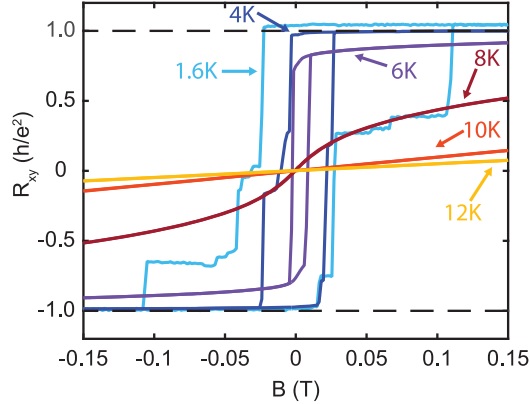
We showed that the combination of topological bands and strong electronic interaction in twisted bilayer graphene gives rise to an intrinsic quantized anomalous Hall effect. The underlying electronic state – a zero-field Chern insulator – has broken time-reversal symmetry caused by strong electronic interactions rather than extrinsic magnetism. Remarkably, this state realizes an orbital magnet since the magnetism arises predominantly from the orbital motion of electrons rather than electron spins.
Science 367(6480), 900-903 (2020).
Science 372(6548), 1323-1327 (2021).
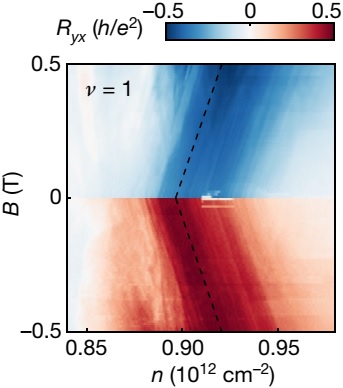
The investigation of a new moiré system – twisted monolayer-bilayer graphene – revealed zero-field Chern insulating states with higher Chern numbers (C=2). Furthermore, we also discovered zero-field topological charge density wave states at half-fillings of moiré bands in this system. These higher-order interaction-induced states have C=1 and spontaneously break lattice symmetry by doubling the unit cell area.
Nature, 588, 66-70 (2020)
Nature Physics, 18, 42-47 (2022).
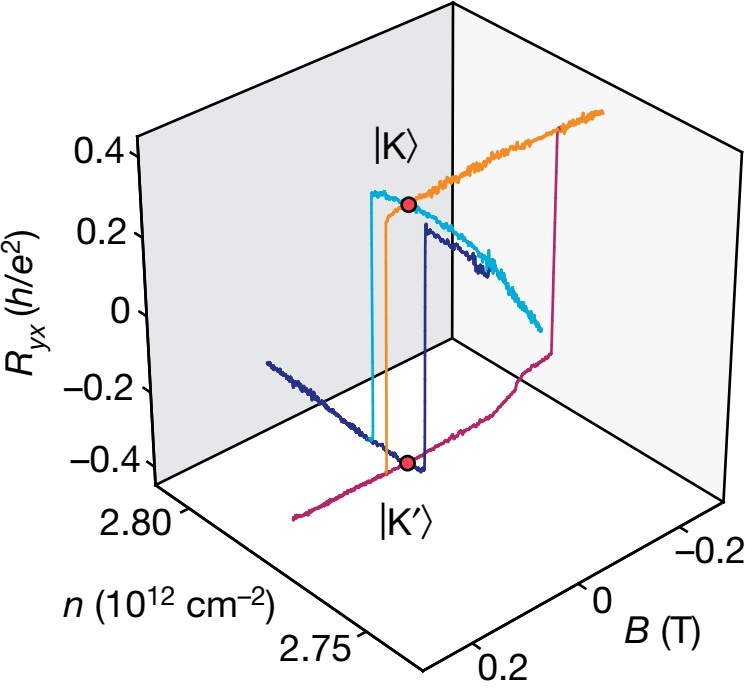
We demonstrated that the topological properties of orbital Chern insulators enable a conceptually new mechanism for non-volatile electrical switching of magnetism. The effect could find applications such as low-power memory and electronic devices based on reconfigurable chiral edge states.
Nature, 588, 66-70 (2020)
Superconductivity in twisted bilayer graphene

This study reported the second observation of the superconductivity in twisted bilayer graphene and further probed the superconducting state by investigating the effects of the electric field and pressure.
Science 363(6431), 1059-1064 (2019).
Fractional quantum Hall effect in graphene
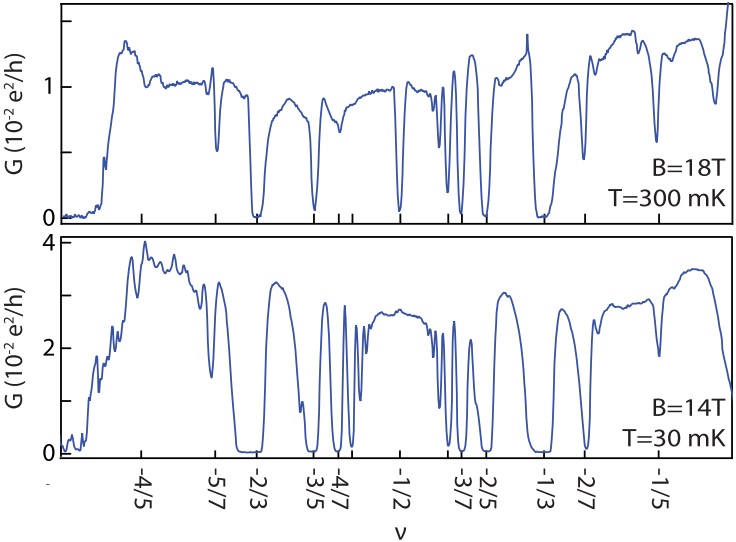
This quantitative study of the multi-component fractional quantum Hall effect in monolayer graphene took advantage of dual graphite-gated devices with an edgeless Corbino topology. This allowed us to measure the bulk conductivity in low-disorder graphene directly and to determine FQH gaps at much lower fields and high temperatures than was previously possible.
Phys. Rev. Lett. 121, 226801 (2018).
Probing complex vortex states and their dynamics
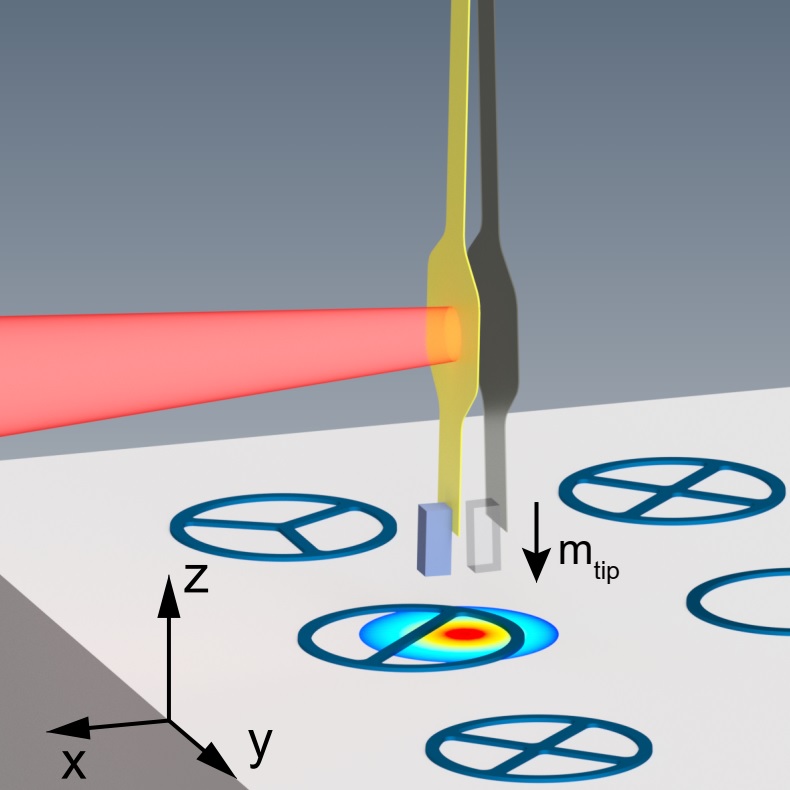
Superconducting vortices are topological defects in the superconducting order parameter that emerge in moderate magnetic fields. We developed Φ0-MFM – a new variant of magnetic force microscopy that takes advantage of the discrete nature of vortices. In Φ0-MFM, we use an ultra-soft cantilever to detect when the small oscillations of the cantilever resonantly drive transitions between distinct vortex configurations. Mapping the spatial location of these resonances and their character gives us unique information about the energetics and dynamics of multi-vortex states.
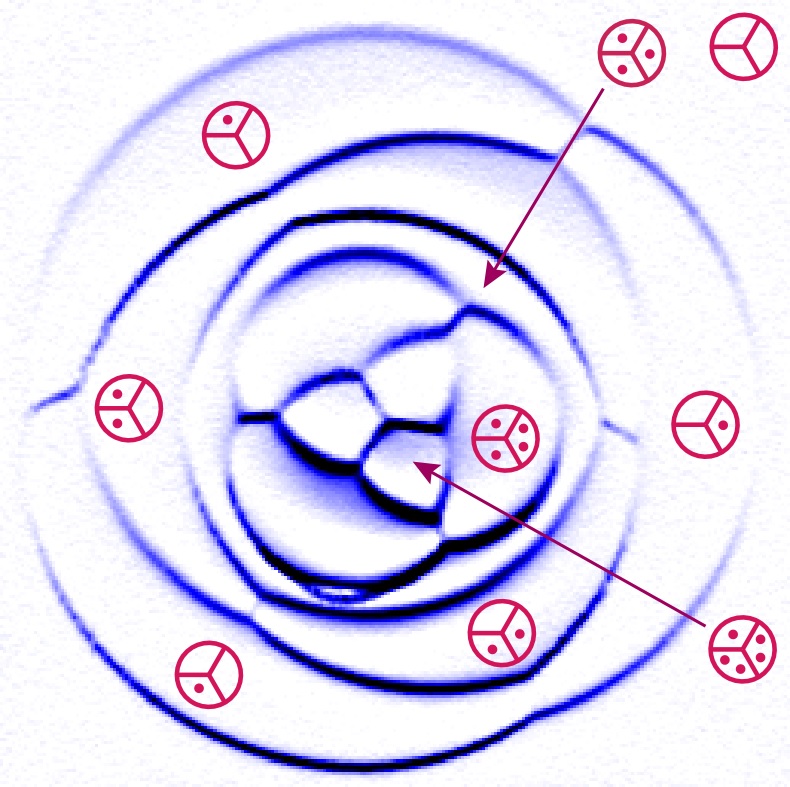
Φ0-MFM is uniquely capable of imaging and controlling states of small vortex ensembles rather than individual vortices. Such multi-vortex manipulations could be especially useful for applications such as vortex braiding, where it is essential to evolve a vortex state along the desired trajectory within the space of possible vortex configurations.
Nano Letters 19(8), 5476-5482 (2019).
Phys. Rev. B 103, 224526 (2021).

Stochastic resonance (SR) is a phenomenon in which a noisy system subjected to a weak periodic drive exhibits a resonant-like response as a function of the noise level. The SR occurs in a variety of physical and biological systems. Moreover, it was even proposed to explain the recurrence of ice ages. We discovered that the SR model describes the dynamics of driven thermally activated phase slips in thin superconducting rings. Practically, the SR effect allows using Φ0-MFM to probe the dynamics of the phase slips or vortices.
Phys. Rev. B 97 184501 (2018).
